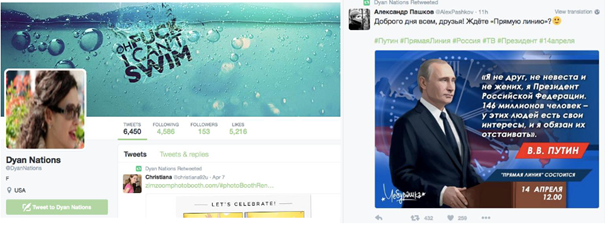How
Why and how are we exposed to so much misinformation today, and is there a way to spot these falsifications?
February 20, 2024
•
,
6 min read

One of the best things about the Internet is that it is a vast repository of knowledge – and this wealth of knowledge is almost never more than a few clicks away. However, this unfettered access to information comes with a host of challenges. In today’s information age, we are bombarded with so much information that effectively identifying and filtering out content that is fabricated, manipulated, or otherwise false and misleading is becoming an increasingly difficult task.
Indeed, it has become trite to say that you cannot and should not take everything you come across online at face value – this includes random articles, social media posts, all the way down to comments from self-proclaimed ‘experts’. The waters get even muddier once you add deepfake content to the mix, as AI-enabled fake audio, images, and video clips can easily boost disinformation campaigns.
Speaking of AI-powered deception: don’t count on ChatGPT and other tools powered by large language models and trained on vast datasets from the Internet to always tell the truth or refute false stories. It has been shown that they have an uncanny ability to agree with untruths and validate misconceptions, especially when asked questions loaded with misinformation, and that their power can ultimately be used to create false narratives on a dramatic scale. Another concern is that chatbots will ‘hallucinate’, that is, spit out made-up answers and references. In other words, their answers should also be scrutinized good reason.
Poisoning the story
Currently, you may be noticing a trend to creatively misrepresent, disinform, or distort the truth. cause polarization among certain groups of people for political gain, or to get people’s attention for other negative purposes, and this usually happens online. Essentially, information can no longer flow freely online as it is filtered out and poisoned, to exert control over a narrative, or to create a working narrative in one’s favor, whichever works best.
Bad actors have chosen to weaponize this technique to control and change certain pieces of information, distilling facts by inserting false data points or fake news into online discussions and social media, which can then influence the real world.
For example, some forms of cyberbullying use disinformation online, causing those involved to experience real psychological and physical trauma. Social media allows false rumors to spread beyond schools, involving many more people and causing even more pain for recipients. Likewise, examples of racism and bigotry seeping into the psyche of the general population through online discourse is a trend that anyone can notice, especially during election season when disparate groups try to politicize certain topics.
The sources of disinformation
Fake news and fake information can spread in different ways. As the above examples suggest, online discourse is an important resource, thanks to forums and social media, where anyone, be it an ordinary person or a bot, can share anything.
Bots that spread disinformation have indeed become that somewhat of a concern in recent years, with a 2018 survey confirming that Americans, for example, largely agree with the negative effects of bots spreading misinformation on social media. In fact, according to another reportAbout 47% of internet traffic can be attributed to bots, increasing year on year, with social media accounting for a huge number – you’re more likely to encounter a bot on Twitter (now X) than a real user, as per A study by Washington University in St. Louis.

Example of an identified bot spreading disinformation.
(Source: Samuel C. Woolley & Douglas Guilbeault. 2017 “Computational propaganda in the United States of America: Online consensus on production.” Oxford Internet Institute, page 7.)
Bots don’t need to be convinced to spread false information, and the more a dubious article or data point is shared and made visible to real people, the more likely it is to enter mainstream offline discourse. For example, in the course of Russian aggression against Ukraine, many false stories emerged troll factories They spread their dictated views online, seemingly in an attempt to discourage people from supporting Ukraine, distort reality by using fake fact-checkers, or by distributing images and footage out of context.

An account that spreads disinformation based on a quote taken out of context.
(Source: AFP fact check)
When such fake news is picked up by political representatives, it can have even more devastating consequences and in itself have some very real consequences, such as the January 6 insurrection against the US Capitolattributed to an increased amount of politicization, disinformation and polarization in American society, driven by online activity further encouraged by political extremism.
Forms of counterfeiting
False information can spread through many forms and places:
- Articles/reports: Depending on where you get your news, some people prefer subjective truths (more biased media) or factual truths fake sites set up by malicious actors spreading false information.
- Social media: Here, disinformation can spread in the form of shared articles from various sources, such as fake news sites, commentators spreading fake news, or pages/groups created to contain said false information and spread it to their members, who then spread it outside the group to share. Users are also important masquerade as influential members of societylike politicians or scientists, to be more convincing with their lies.
- Forums and comment sections: Much like social media, it’s all about sharing article links, creating threads promoting false information, or through posts that do the same. Polarizing comments spread within online communities such as on 4chan may be the driving force extremism in the real world.
- Videos/Images: Any platform used to share video or image content can be used to spread false information in the form of fake reports, malicious event summaries, propaganda hidden in memesaltered images and biased documentaries, but also by online personalities who thrive on social polarization to push their content.
Also of concern is the use of doctored images, video or audio deepfakes, which are even more difficult to recognize as fakes, as shown in our recent article on audio deepfakes and their potential misuse in scams. Although created for research purposes, the deepfake highlights the dangers of encountering ‘stolen voices’ as it is highly compelling, showing how free AI tools like these can use people’s likenesses in any form for criminal activity.
How to deal with disinformation or fake news
Thinking about what we see and read online is the best way to counter the influence of fake news. Unfortunately, critical thinking is often not taught well in schools, but that doesn’t mean it can’t be self-taught at home.
But how exactly do you distinguish between a real story and a fictional one? Some easy-to-spot clues can help.
- First, stop and think about the information you encounter. Blindly believing what a ‘doctor’ says online about the effects of a vaccine or treatment just because he or she is wearing a white lab coat in a video is incorrect, as anyone could play a doctor online. Also consider what kind of miracle it would really be if a three-eyed child was actually born this year.
- Second, investigate and verify everything you encounter. Social media is often used to spread counterfeit and deception, such as fabrications army draft papers, labeling election results as fraudulent, repurposing movie scenes as actual events, saying all vaccines cause death, and the like. The best way to combat this is to check objective news websitesand to follow fact-checking pages who investigate hoaxes.
- Thirdly, put every piece of data into perspective. By using a variety of legitimate sources, such as those in the previous point, you read and create your own opinion. By distilling different points of view, one can create their own positions on crucial topics, and with the power of the Internet, anyone can gain a better understanding of something they find relevant and interesting.
- Moreover, stay calm and try not to be provoked by an obviously biased opinion. While debates can get heated, just like regular bullies, online trolls thrive on provocation. Don’t try to legitimize their positions by ‘taking the bait’, as they say.
And finally, we recommend reading the Cybersecurity and Infrastructure Security Agency (CISA). brochure on disinformation tactics, because it is a very useful and informative compilation, covering disinformation methods, tactics and ways to recognize fakes, with some real examples. If these methods are combined, it should be easier to discover what is real and what is not.





















